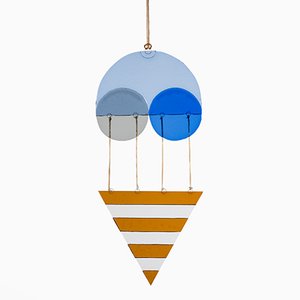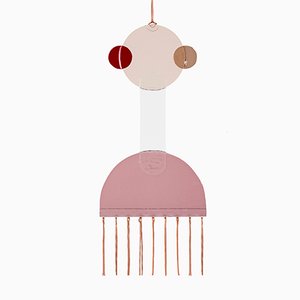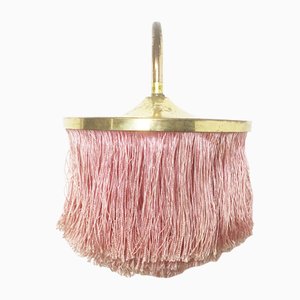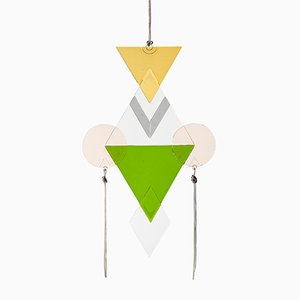Serena Confalonieri’s Maasai Collection
On the Fringe
Petite with a flash of red hair, Serena Confalonieri is quick to smile, bubbling with an impish, playful energy. It comes as no surprise, then, to hear how the Milan-based designer describes her work: “I design friendly objects with smooth lines and bold colors, meant for grown-up people who still want to have fun.”
Over the past decade or so, Confalonieri—a globetrotting graduate of Milan’s Politecnico Institute—has dedicated herself to character-rich interiors, products, and graphics, all marked by a strong, decorative style. This approach is intended not only to add a dose of mirth to the everyday, but also to establish a lasting connection with those who engage with her designs. “I like objects that make a relationship with a person, and for me, color and texture is key to that, because they help you remember elements from your past experiences with different cultures and places. As a designer, I think the best way to help others relate to my objects is to make sure they make you feel something.”
Her latest series, the unabashedly joyful Maasai Collection, does just that. Inspired by Confalonieri’s fascination with the centuries-old traditions of the Maasai people of northern Tanzania and southern Kenya—and, in particular, their use of bright colors and strong graphics and forms in everything from masks to jewelry and body painting—Confalonieri created a series of handmade mirrors and ceramic vases. She sees the collection as an homage, one she hopes will encourage others to appreciate “the beauty and the pride of this venerable culture.”
After intensive research, Confalonieri chose a color palette based on the one used by the Maasai for masks and body ornamentation; she then “analyzed [recurring] shapes and tried to redesign them in a consistent, geometric way in order to get down to their essential beauty and proportions.” She chose to work with mirror “because it continues to reflect the decorated face or body” regardless of location, and ceramic “because it is a very ancient material and can be worked directly by the hands.” Every piece in the collection also features eco leather detailing, a nod to the fringe found on Maasai masks and men’s skirts.
As the designer notes, “Maasai are warriors, and their decorations, masks, and dances are often part of war rituals. When you look at them, they often look happy, joyful. But they are in fact war decorations. I like the way they interpret war; it’s not like for us [in Western culture], where war is always represented as something dark and ugly. For them, it’s just war—a fight for something. War, peace, death—everything is just a part of life.”
She goes on: “Nowadays, we’re always looking for something new, something different. But in the end, it’s the original—something like archetypal signs—that make the difference. The simple stripes, the rhythm between those stripes, the simple shapes: they are the origin of everything. It’s not minimalist. It’s just essential… And fun.”
-
Story by
-
Anna Carnick
Anna is Pamono’s Managing Editor. Her writing has appeared in several arts and culture publications, and she's edited over 20 books. Anna loves celebrating great artists, and seriously enjoys a good picnic.
-
-
Photos by
-
Marco Lehmbeck
Born and raised between forests and lakes near Berlin, Marco studied creative writing in Hildesheim and photography in Berlin. He’s also part of the organizational team behind Immergut indie music festival. He loves backpacking, Club-Mate, and avocados, and he always wears a hat.
-
More to Love
Mojo Wall Amulet #2 by Serena Confalonieri

Mojo Wall Amulet #1 by Serena Confalonieri

Shard Hand Woven Wall Hanging from Weavesmith, 2017

Brass and Fringe Lamp by Hans-Agne Jakobsson for AB Markaryd

Fringe Pendant Lamp by Hans-Agne Jakobsson for Markaryd

Vintage Fringe Ceiling Light by Hans-Agne Jakobsson for Markaryd

Model V271 Fringe Wall Light by Hans-Agne Jakobsson, 1950s

Vintage Model T603 Silk Fringe Pendant Light from Hans Agne Jakobsson

Mojo Wall Amulet #3 by Serena Confalonieri



